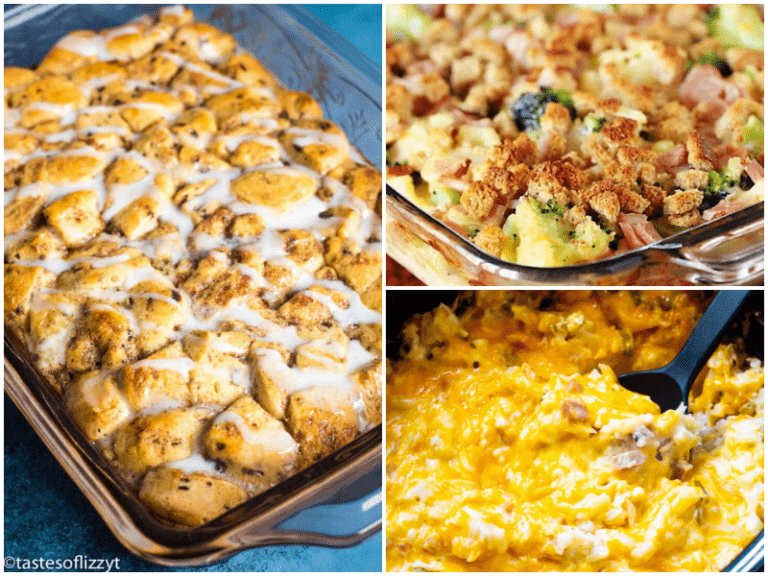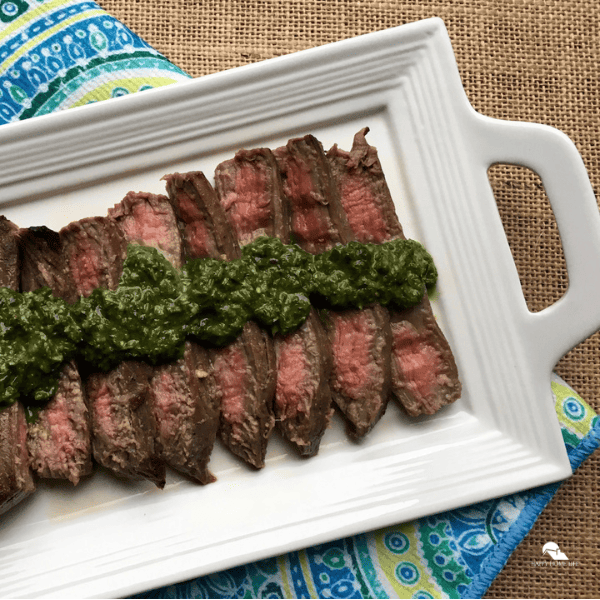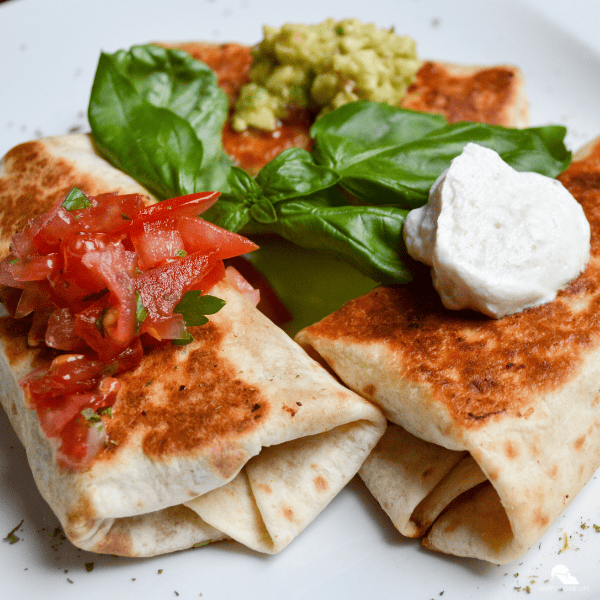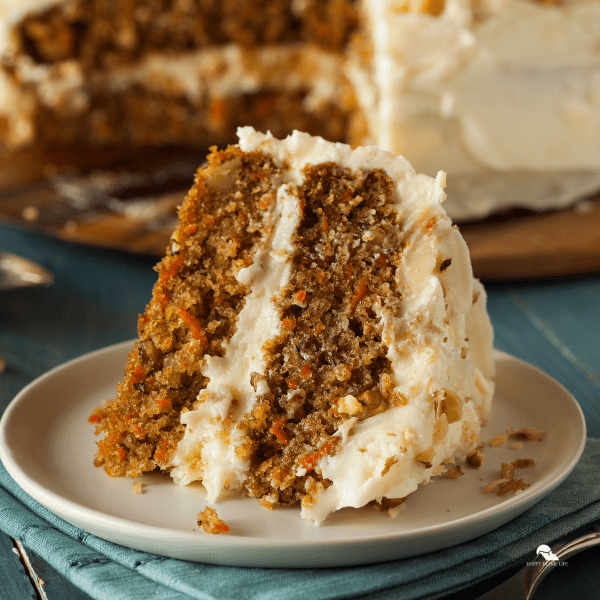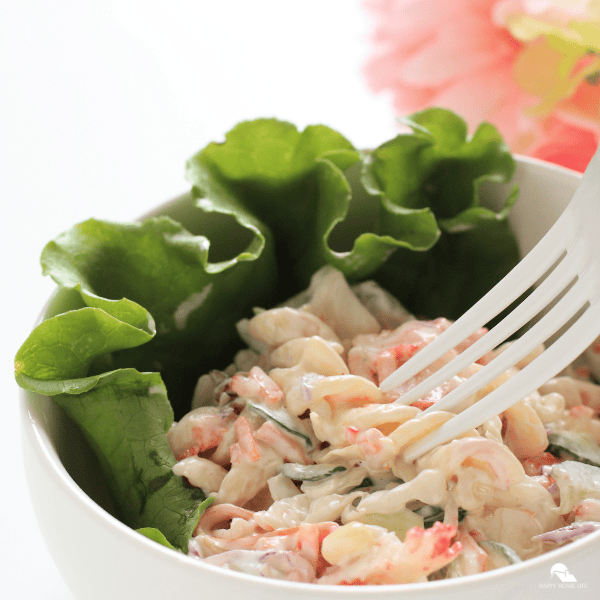Lasagna is a timeless classic that brings comfort and satisfaction to countless dinner tables around the world. But when it comes to the cheese filling, the debate rages on: which cheese is better for lasagna – ricotta or cottage cheese?
Let’s explore the characteristics of both cheeses and help you decide on your next lasagna masterpiece. So, let’s dive in and discover which cheese reigns supreme in the world of lasagna!
Which Cheese Is Better For Lasagna Ricotta Or Cottage Cheese?
According to Tasting Table, cottage cheese has a sharper and more acidic flavor compared to ricotta, which may not be desirable as a filling for lasagna. The article suggests that ricotta’s smooth and delicate texture makes it a better option for lasagna.
The choice between using ricotta or cottage cheese for lasagna often depends on personal taste preferences and the desired texture of the dish. Both cheeses have their unique qualities that can contribute to a delicious lasagna.
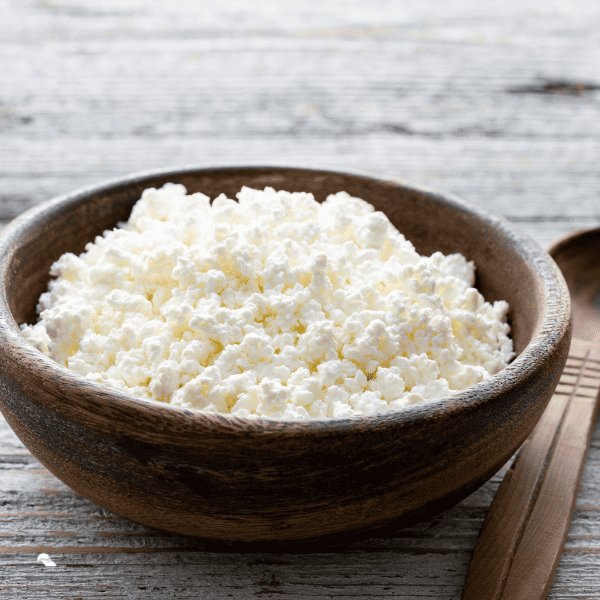
Ricotta Cheese: Creamy Goodness
Ricotta cheese is a traditional Italian cheese made from whey, the byproduct of cheese-making. It boasts a light and creamy texture, making it a popular choice for lasagna fillings. Ricotta adds a rich and velvety layer to each bite, creating a smooth and luscious mouthfeel. Its mildly sweet flavor complements the robust flavors of the tomato sauce and other ingredients, enhancing the overall taste of the dish.
Cottage Cheese: A Tangy Twist
On the other hand, cottage cheese offers a unique tangy twist to the lasagna experience. Made from cow’s milk, cottage cheese has a curd-like texture with small chunks, giving your lasagna a delightful contrast. Its slightly salty and tangy taste adds a distinct flavor profile to the lasagna, making it an interesting choice for those who enjoy a more pronounced cheesy taste.
Consider Your Preferences
When choosing between ricotta and cottage cheese for your lasagna, it ultimately boils down to personal preference. If you prefer a smoother and creamier texture, ricotta cheese might be the ideal option for you. On the contrary, if you enjoy a bit of texture and tanginess, cottage cheese can bring a delightful twist to your lasagna creation.
Combining the Best of Both Worlds
For those who can’t decide or want to experiment, you can even combine ricotta and cottage cheese in your lasagna filling. This hybrid approach allows you to enjoy the best of both worlds – the creaminess of ricotta and the tanginess of cottage cheese. Simply mix the two cheeses together and spread them evenly in your lasagna layers for a unique and irresistible taste.
Whether you choose ricotta, cottage cheese, or a combination of both for your lasagna, it’s all about creating a dish that satisfies your taste buds. Each cheese brings its own distinct qualities to the table, making the decision a matter of personal preference. So, go ahead and get creative with your lasagna recipe, experimenting with different cheeses to find the perfect combination that makes your taste buds sing. Happy cooking!
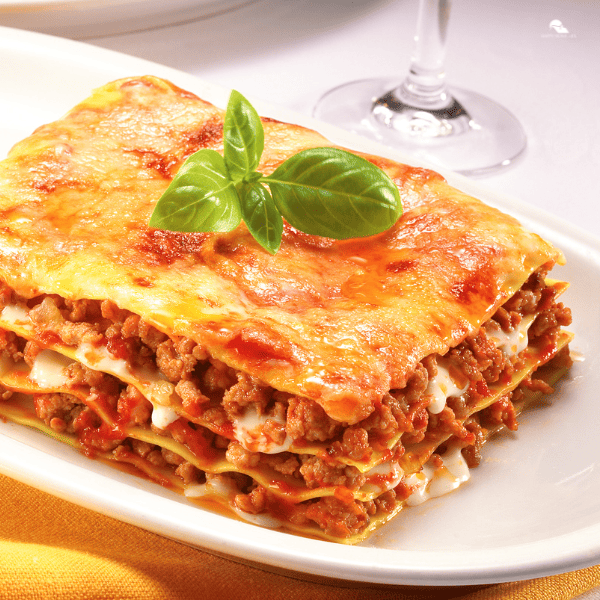
Can I use farmers cheese instead of ricotta in lasagna?
Farmers cheese is made from cow’s milk and has a mild, slightly tangy taste. It is often compared to cottage cheese but with a firmer texture and fewer curds. When used in lasagna, farmers cheese can add a unique twist to the dish, giving it a richer and slightly tangy flavor.
Yes, you can use farmers cheese as a substitute for ricotta in lasagna. Farmers cheese is a versatile and creamy cheese that can work well in various recipes, including lasagna. While ricotta has a smoother and creamier texture, farmers cheese offers a slightly different flavor and texture profile.
To use farmers cheese as a substitute for ricotta in lasagna, you can simply replace the ricotta with an equal amount of farmers cheese in your recipe. Keep in mind that farmers cheese may have a slightly different consistency, so you might want to adjust the recipe accordingly.
It’s worth mentioning that while farmers cheese can be a suitable substitute, the taste and texture will differ from using ricotta. If you’re looking for a closer match to the traditional ricotta flavor and texture, you may want to consider blending farmers cheese with cream cheese or cottage cheese to achieve a smoother consistency.
Ultimately, the choice between using farmers cheese or ricotta in your lasagna comes down to personal preference. Feel free to experiment and find the combination that suits your taste buds best.
What kind of cheese do you put in lasagna Reddit?
When Reddit users talk about making lasagna, they often mention using a mix of cheeses to create that ooey-gooey, flavorful delight. The three most talked-about cheeses for lasagna are ricotta, mozzarella, and Parmesan.
Ricotta cheese is creamy and smooth. It’s like a soft cloud that goes between the layers of pasta in lasagna. This cheese adds a rich, almost melt-in-your-mouth texture to the dish. It’s often mixed with beaten eggs and herbs, then spread over the lasagna noodles.
Mozzarella cheese is the “stretchy” one. You know, the cheese that pulls in long strings when it melts? That’s mozzarella! People usually shred it and scatter it on top of the lasagna layers. When it bakes in the oven, it turns golden and gooey, giving that irresistible cheesy goodness.
Parmesan cheese is the one with a bold, kind of nutty flavor. It’s usually grated and sprinkled over the top of the lasagna. This cheese adds a fantastic depth of taste to the dish, making it even more delicious.
These three cheeses work together to give the lasagna its fantastic taste and texture. Some Redditors also suggest trying other cheeses like provolone or fontina to switch things up a bit. The goal is to find the mix of cheeses that makes your lasagna absolutely irresistible – a dish that satisfies your taste buds and makes everyone at the table ask for seconds!
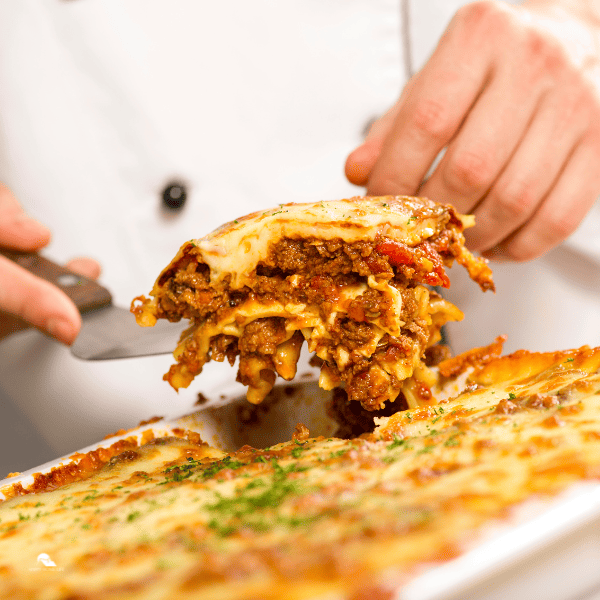
Is cheddar or mozzarella better for lasagna?
Cheddar and mozzarella are both tasty cheeses, but they bring different flavors and textures to lasagna. The best cheese for lasagna depends on personal preference and the kind of taste you want in your dish.
Mozzarella is a stretchy and mild cheese. It melts well and creates that delightful, gooey layer on top of lasagna. Its mild taste complements the other ingredients without overpowering them. It’s often used in traditional lasagna recipes and provides that classic cheesy pull when you take a slice.
Cheddar, on the other hand, has a sharper and more pronounced flavor compared to mozzarella. It’s a bit firmer and doesn’t melt as smoothly as mozzarella. Some people enjoy the tangy taste it adds to lasagna, especially when mixed with other cheeses for a more complex flavor profile.
Mozzarella might be the better choice if you prefer a milder, stretchy, and gooey cheese layer in your lasagna. But if you like a sharper, more distinct cheesy flavor, mixing cheddar with other cheeses or using it as a topping could be a tasty option.
Some folks even opt for a combination of both cheeses to get the best of both worlds—a gooey, melty layer from mozzarella with a hint of sharper flavor from cheddar.Ultimately, it boils down to personal taste. Experimenting with different cheeses or blends can be fun and can help you discover the perfect cheese combination for your lasagna.
Can I use Gruyere instead of mozzarella?
Gruyère is a semi-hard cheese that originates from Switzerland. It has a rich, creamy texture and a slightly sweet and nutty taste. When melted, Gruyère becomes smooth and creamy, making it an excellent option for adding depth of flavor to lasagna.
Yes, you can use Gruyère cheese instead of mozzarella in certain dishes, including lasagna. While mozzarella is a popular choice for its melty and stretchy texture, Gruyère offers a distinct and nutty flavor that can bring a unique twist to your dish.
When substituting Gruyère for mozzarella in lasagna, keep in mind that the taste and texture may differ. Gruyère has a stronger flavor compared to mozzarella, so the final dish will have a more pronounced cheese taste. Some people prefer this bolder flavor profile, while others may find it overpowering. It’s a matter of personal preference.
If you decide to use Gruyère in place of mozzarella, consider combining it with other cheeses like Parmesan or ricotta to balance the flavors. This can create a well-rounded and delicious lasagna experience. Additionally, keep in mind that Gruyère takes longer to melt than mozzarella, so adjust your cooking time accordingly.
In summary, while mozzarella is a popular choice for lasagna, using Gruyère as a substitute can offer a unique and flavorful twist to your dish. Experiment with different cheese combinations to find the balance that suits your taste preferences.
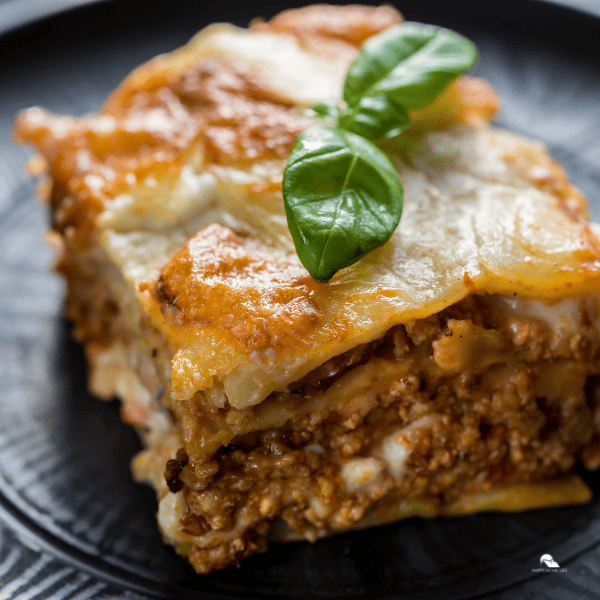
What is a good substitute for mozzarella cheese in lasagna?
Though mozzarella cheese is a customary selection for lasagna, there exist various alternatives that can enhance both the flavor profile and texture of the dish. Ricotta, prized for its creamy texture and delicate taste, introduces a unique richness despite not achieving complete melting. Cottage cheese, recognized for its tangy essence and curd-like texture, adds a creamy dimension to the dish. Cheddar, while lacking mozzarella’s stretchiness, brings forth a strong melting capability, delivering a bold flavor boost to the lasagna.
Monterey Jack’s buttery profile when melted mirrors mozzarella’s creaminess. Swiss cheese, with its nutty taste, offers a stretchy texture akin to mozzarella. Parmesan, not a melter but a great topper, provides a salty burst and crispy texture. Tangy goat cheese, though not a melter, can add a bold flavor to the lasagna. Personal preference guides the choice of substitute for a delightful lasagna experience.
If you’re looking for a substitute for mozzarella cheese in lasagna, there are a few options that can work well:
Ricotta Cheese:
- Creamy & Mild: Ricotta is smooth, creamy, and slightly sweet, offering a great texture in lasagna. It doesn’t melt like mozzarella, but it adds a richness that complements the dish’s flavors well.
- Texture & Flavor: Its curd-like texture might not be stretchy like mozzarella, but it layers wonderfully and contributes a subtle yet delicious taste to the dish.
Cottage Cheese:
- Fresh & Tangy: Cottage cheese has a mild tanginess and a curd-like texture, giving lasagna a creamy element. Although it doesn’t melt entirely like mozzarella, it blends well with other ingredients, adding a unique taste.
- Versatility: This cheese can be used as a layering component or mixed into the filling, providing a pleasant tang and creamy texture to the lasagna.
Cheddar Cheese:
- Sharp & Rich: Cheddar offers a bold, sharp taste and a firm texture, different from mozzarella’s stretchiness. It melts well and brings a flavorful richness to lasagna, adding depth to the dish.
- Flavor Enhancement: While it may not give the same gooeyness as mozzarella, using cheddar in moderation or combined with other cheeses can elevate the overall taste of your lasagna.
Monterey Jack Cheese:
- Buttery & Mild: Monterey Jack has a buttery flavor and a semi-soft texture that becomes creamy when melted. It doesn’t stretch like mozzarella, but it provides a mild tang and creaminess to the dish.
- Melting Properties: When used as a mozzarella substitute, it contributes a smooth texture and blends well with other ingredients in lasagna recipes.
Swiss Cheese:
- Mild & Nutty: Swiss cheese has a mild, nutty taste and a slightly stretchy texture when melted. While not identical to mozzarella, it adds a unique flavor profile and texture to lasagna.
- Flavor Complement: When incorporated into lasagna, Swiss cheese offers a subtle yet distinct taste that pairs well with various ingredients, contributing to a delightful culinary experience.
Parmesan Cheese:
- Hard & Salty: Parmesan is a hard, granular cheese with a strong, salty flavor. It doesn’t melt similarly to mozzarella, but when grated and sprinkled on top, it creates a crispy crust and adds a burst of savory taste to the dish.
- Texture & Taste: While not a direct substitute for the gooeyness of mozzarella, Parmesan’s grated form gives lasagna a unique texture and a distinctive cheesy flavor.
Goat Cheese:
- Tangy & Creamy: Goat cheese has a tangy, creamy taste that can bring a bold flavor to lasagna. Although it doesn’t melt like mozzarella, using crumbled or spread goat cheese layers can add a tangy and creamy element to the dish.
- Flavor Combination: Its tanginess pairs particularly well with vegetables or herbs in lasagna recipes, offering a different yet delicious taste profile.
Remember, choosing a substitute depends on personal preference and desired outcomes for your lasagna. Experimentation with different cheese combinations or a single substitute can result in a flavorful lasagna tailored to your liking.
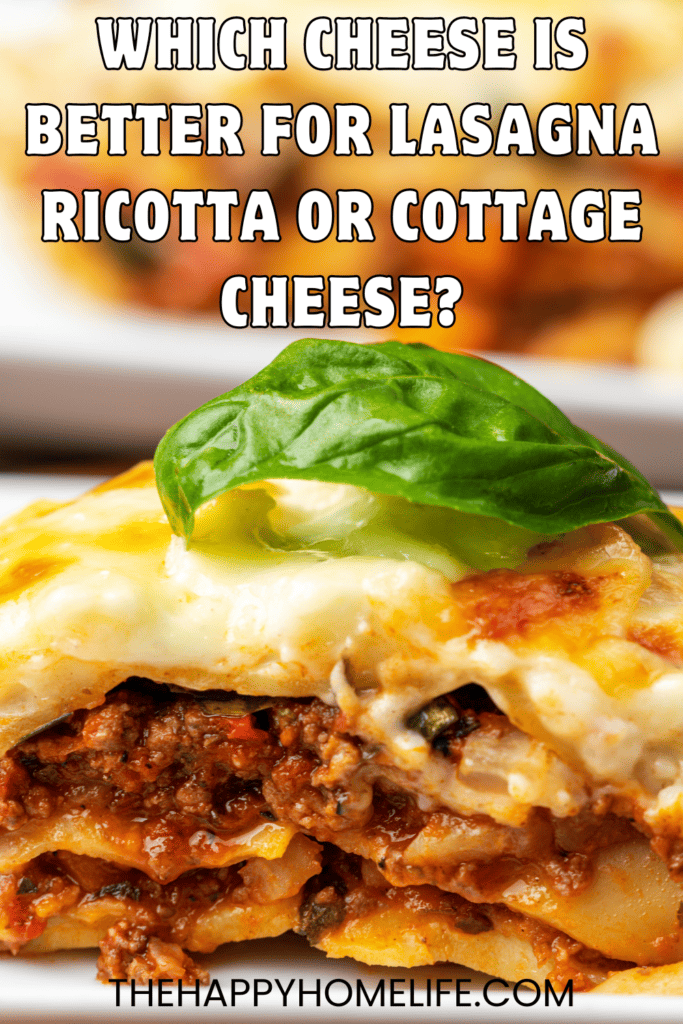
5-Cheese Meaty Lasagna
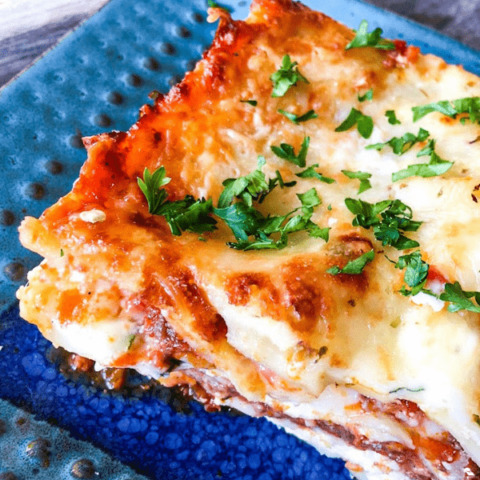
It’s hard to imagine a classic lasagna recipe without lots of luscious cheese. Three of the most common types of cheese found in traditional lasagna recipes are mozzarella, ricotta, and parmesan.
This recipe builds on this delicious cheesy foundation with the addition of freshly grated Asiago and shredded Gruyere.
Ingredients
- 4 c. meat sauce
- 12 lasagna noodles, cooked according to package instructions and dried thoroughly
- 1 24-oz. container ricotta cheese
- 1 egg, beaten
- 3 T. Italian seasoning, divided
- ½ c. fresh parsley, chopped, plus extra for garnish
- Sea salt and black pepper, to taste
- 8-oz. mozzarella cheese, shredded, divided
- 8-oz. Gruyere cheese, shredded, divided
- ¾ c. Parmesan cheese, freshly grated, divided
- ¾ c. Asiago cheese, freshly grated, divide
Instructions
- Place top oven rack in the center position and pre-heat oven to 375°F.
- In a large bowl, combine ricotta cheese, egg, 2 tablespoons Italian seasoning, and fresh parsley. Season with salt and black pepper, to taste. Stir to combine and set aside.
- Spray a 13 x 9” glass baking dish with non-stick cooking spray. Add enough meat sauce to cover the bottom of the pan in a thin layer and then cover with 3 lasagna noodles. Top with an even layer of the ricotta cheese mixture, followed by a layer of shredded mozzarella and Gruyere cheese, using equal amounts of each. Finish with a thin layer of grated Parmesan and Asiago cheese, also in equal amounts.
- Repeat this process three more times: meat sauce, noodles, ricotta mixture, shredded cheeses, and grated cheeses. Sprinkle the remaining Italian seasoning across the final layer.
- Loosely tent dish with aluminum foil and bake for 30 minutes. Remove foil and continue baking for another 20-25 minutes. Remove from oven and rest for 20 minutes before slicing. Serve topped with some freshly chopped parsley, if desired. Enjoy!
Notes
Tip #1: This recipe is easier to prepare if you have the meat sauce prepared ahead of time. (If you don’t have the time or inclination to do so, use your favorite prepared pasta sauce instead).
Tip #2: The key to keeping lasagna from getting soupy is to make sure your noodles are thoroughly dried before assembling.
Nutrition Information:
Yield:
6Serving Size:
1Amount Per Serving: Calories: 777Total Fat: 40gSaturated Fat: 22gTrans Fat: 0gUnsaturated Fat: 13gCholesterol: 153mgSodium: 1323mgCarbohydrates: 56gFiber: 5gSugar: 8gProtein: 48g
These nutritional calculations might not be accurate. Please speak with a licensed nutritionist to assist you.

